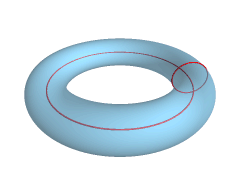|
(2016
midterm assignment) Model Student Midterm answers 2016 #1: Long Essays (Index) |
LITR 4328 |
 |
Adrian Russell
25
September 2016
Darkness is Beautiful from the View of the Light
We are a species with an insatiable desire for information. This, along
with advances in science and technology, sparked the Enlightenment period.
Emotionless data was hailed as the word of truth. However, a new sense of
freedom in early America caused many to question what has been considered the
truth. Everything under the parasol of truth was being pulled out and looked at
in new light. However, I feel the true frontier of Early American Renaissance
literature was the concept of using the dark to give light, and finding a light
in the darkness. Against popular conception, the beauty of the darkness was not
only used in gothic literature at this time. Using passages from Edgar Allan
Poe’s Romance, Ralph Waldo Emerson’s
Nature, James Fenimore Cooper’s
The Last of the Mohicans, and Maria
Susanna Cummins’ The Lamplighter, the
light will be juxtaposed and then merged with the dark, showing that the
greatest achievement of the American Renaissance was finding beauty in the
darkness.
Beginning with Romance, Edgar
Allan Poe describes our human fascination with the darkness. In line 3.9, Poe
explains:
“And
so, being young and dipt in folly
I
fell in love with melancholy,
And
used to throw my earthly rest
And
quiet all away in jest—
I
could not love except where Death
Was
mingling his with Beauty’s breath—“ (Poe 3.9-3.14)
People are drawn to the dark by design. It is almost as if life cannot be
as exciting without the prospect of death. That being said, death becomes
attached to all of the things we desire or find beautiful that make us feel
alive. “It was to die for”. “I will love you until my last breath”. “I want it
so bad, it’s killing me”. These phrases are so common because we all attach
death to excitement and beauty in our life naturally.
Ralph Waldo Emerson provides a clearer perspective that can explain why
early Americans found beauty in the darkness. In paragraph 16 of the
course-provided copy of Emerson’s nature, he says “There is no object so foul
that intense light will not make beautiful. And the stimulus it affords to the
sense, and a sort of infinitude in which it hath, like space and time, make all
matter gay. Even the corpse has its own beauty.” Aside from the last line being
so definitive of the beauty in darkness, even the first line can be interpreted
as saying the darkness is beautiful if we can inspect it up close and become
intimate with it. The darkness excites us and stimulates our senses, ultimately
actually making us happy in a way we do not truly understand.
In The Lamplighter, we see
Maria Susanna Cummins use the juxtaposition of light and dark to give us a
fluttering effect of setting and scene. She opens the narrative in chapter 1.1
of the course-provided text with “It
was growing dark
in the city. Out in the open
country it would be light for
half-an-hour or more; but in the streets it was already dusk. Upon the wooden
door-step of a
low-roofed, dark, and unwholesome-looking house,
sat a
little girl, earnestly gazing up the street.
The house-door behind her was close to the side-walk; and the step on which she
sat was so low that her
little unshod feet rested on the cold bricks. It was a chilly evening in
November, and a light
fall of snow had
made the
narrow streets and dark lanes dirtier and more cheerless than ever.” With close
reading of only the words “dark” and “light” a reader would find they alternate.
The structure is almost like something or someone is telling us it will all be
ok, but then something dark and scary keeps threatening the safety of the light.
Every noun described as light is positive or hopeful and every noun described as
dark is negative. This can be used to instill that exciting fear in the reader
that makes them happy in a peculiar way.
James Fenimore Cooper employed expert knowledge and usage of the
juxtaposition of light and darkness in
The Last of the Mohicans. In the final paragraph of chapter two, 2.30 in the
course-provided text, Cooper writes “The
cavalcade had not long passed, before the branches
of the bushes that formed the thicket were cautiously moved asunder, and a human
visage, as fiercely wild as savage art and unbridled passions could make it,
peered out on the retiring footsteps of the travelers. A gleam of exultation
shot across the darkly-painted lineaments of
the inhabitant of the forest,
as he traced the route of his intended victims, who rode unconsciously onward,
the light and graceful forms of the females waving among the trees, in the
curvatures of their path, followed at each bend by the manly figure of Heyward,
until, finally, the shapeless person of the singing master was concealed behind
the numberless
trunks of trees, that rose, in dark lines, in the intermediate space.”
The reader can nearly sit in this setting and see the lines of dark and light
circling each other before they collide. This use of light versus dark was
instrumental in giving the reader imagery that lends to the polarity of the
characters in this scene. A dark
Indian vetting the light-skinned American goddess is the quintessential scene of
lightness and darkness in early American literature.
Through lightness and darkness, truth was found in early American
literature. However, truth is elusive and can mean many different things. Truth
was seen one way under the light of the enlightenment. When we move into early
American Renaissance, we found a new truth. We found a new way of describing
beauty. The true frontier of Early American Renaissance literature was the
concept of using the dark to give light, and finding a light in the darkness
 |
 |
 |
